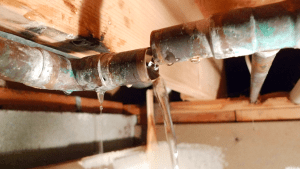Exactly how to Inspect If Your House Has a Covert Leak
Exactly how to Inspect If Your House Has a Covert Leak
Blog Article
Just how do you really feel on the subject of Hacks to detect leaks?

Early detection of leaking water lines can alleviate a possible catastrophe. Some small water leakages might not be visible.
1. Analyze the Water Meter
Inspecting it is a surefire method that aids you discover leaks. If it relocates, that indicates a fast-moving leakage. This means you may have a slow leak that might even be underground.
2. Check Water Consumption
Evaluate your water bills and track your water intake. As the one paying it, you need to see if there are any kind of disparities. If you find sudden changes, despite your consumption being the same, it indicates that you have leaks in your plumbing system. Bear in mind, your water expense should drop under the same variety on a monthly basis. A sudden spike in your bill suggests a fast-moving leak.
On the other hand, a steady boost monthly, despite the same habits, shows you have a slow-moving leak that's also gradually rising. Call a plumber to extensively inspect your residential property, especially if you really feel a warm location on your flooring with piping underneath.
3. Do a Food Coloring Examination
30% comes from commodes when it comes to water consumption. Test to see if they are running effectively. Drop specks of food shade in the container and also wait 10 minutes. There's a leakage in between the container and also dish if the shade in some way infiltrates your dish during that time without flushing.
4. Asses Outside Lines
Don't fail to remember to check your outside water lines too. Ought to water permeate out of the link, you have a loose rubber gasket. One small leakage can lose loads of water and also increase your water bill.
5. Evaluate the scenario and check
Homeowners should make it a routine to inspect under the sink counters and also even inside cabinets for any type of bad odor or mold and mildew growth. These two red flags suggest a leak so timely attention is called for. Doing routine inspections, even bi-annually, can save you from a significant trouble.
If you understand your home is currently old, keep a careful eye on your heaters, tubes, pipes and so on. Check for stainings and deteriorating as most devices and pipelines have a life span. They will likewise normally weaken as a result of tear and put on. Don't wait for it to rise if you believe leaking water lines in your plumbing system. Call a professional plumber today so you don't wind up with a terrible mess in your home.
Early discovery of dripping water lines can minimize a potential catastrophe. Some small water leaks might not be visible. Checking it is a surefire method that helps you find leaks. One tiny leak can waste loads of water and also surge your water bill.
If you presume dripping water lines in your plumbing system, don't wait for it to intensify.
How to Know If Your Home Has a Hidden Leak
Water Meter Reveals Inexplicable Water Usage
If you’d like to test whether or not there’s a leak somewhere in your home, you can do this using your water meter. Here is how to conduct the test:
Don’t use any water in your home for at least 30 minutes; this also means not turning on faucets or water-using appliances.
Go outside, and check your water meter for activity.
If your water meter shows that there was activity, even though no one was using any water, this proves that there is a leak in your home.Visible Mold or Mildew Growth
Leaks behind walls create moist, dark environments that allow mold and mildew to grow and thrive. Eventually, you might see mold growth forming on the wall closest to a hidden leak.
If mold is growing in an area that receives a high amount of moisture, such as a bathroom, it may simply be an indication that better ventilation is needed. However, if you see mold growth on a wall or the ceiling in an area where you would not expect, you probably have a hidden leak.
Musty, Mildew Odor
Sometimes you might not be able to see the mold or mildew that is growing as a result of a leak. However, the smell can give the problem away just as easily. If you catch a whiff of something musty, there’s a good chance that old water is collecting somewhere in your home that you can’t see.
Stained/Warped Walls, Ceilings, or Floors
When your home soaks up water, a variety of red flags can become visible, including ceiling stains, bubbling drywall, warped walls, and sagging floors. While these issues can be caused by excess humidity, they can also be signs that a pipe or plumbing connection has started leaking behind your walls.
Inexplicably High Water Bill
After a while, you get a general sense for what your water bill should be. If you own a pool or sprinkler system, your bill will tend to be higher during summer. However, if you receive a water bill that seems especially high, and you can’t figure out what caused it, then you may have a hidden leak somewhere that’s increasing your bill.
https://www.plumbingjoint.com/blog/2019/july/how-to-know-if-your-home-has-a-hidden-leak/
.jpg)
Hopefully you liked our excerpt about Leaking water lines. Thank you so much for taking the time to read our article post. Remember to take the opportunity to share this blog posting if you enjoyed it. Bless you for your time. Kindly come visit our site back soon.
Report this page